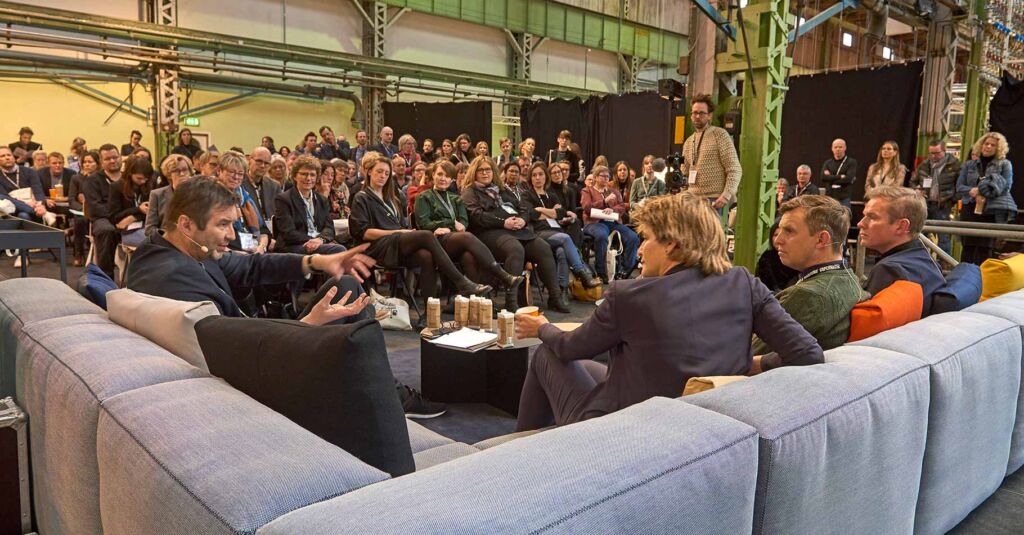“Rooted structure slows down the innovation of educational environments”
This was one of the points at this year’s education-talk at Trends & Traditions. Did you miss the speech? Then you can read the key points here and see pictures from the lovely day at Lokomotivværkstedet.
The panel consisted of:
- Torben Engsig Sørensen. Partner and architect at Zeni architects. Zeni architects were behind School Building of the Year 2017
- Rosan Bosch. Founder and Creative Director at Rosan Bosch Studio. Rosan Bosch Studio is a cross-functional company that works at the intersection of art, design, and architecture. The company has worked a lot with educational buildings and design.
- Lasse Remmer, Lead Ambassador of the EU project ’Future Classroom Lab’ and manager of the Danish department at UCC.
The educational sector of the future – 40-minute talk summed up in 5 points:
We must think about schools in a new way
It is not the individual teacher, the individual manager, or the individual school’s job to rethink schools. Society must change the way we organize our schools, the way we think about teaching and learning, and thereby, the structures that society creates for our schools. When the structure results in teachers teaching classes in a classroom, it slows down the development of what teaching has to offer.
We have developed a school that does not make sense anymore
As a society and as parents, we must demand a different school and allow schools to develop and change. We must be open to a different school structure from when we were in school and accept that students are taught different things than we were. The legislation on what students must learn is too rigorous and results in too many constraints.
We must measure and evaluate what is relevant
Our children are measured based on skills that were relevant when we were in school. Today, the job market demands different competencies and we must dare to let go of the often outdated skills and turn our attention to the competencies of the 21st century. This applies both to teaching as well as tests and evaluations – because what we measure is valued and that is what we build and organize schools based on.
We must build schools cross-functionally
It is a shame that processes do not allow us to think cross-functionally about, for instance, new school buildings. Architects know how the architecture of a building can change behavior. Teachers and pedagogues have a vast amount of knowledge about teaching and pedagogy. These two pools of knowledge could be used for collaboration to determine how to combine pedagogy and spacious frames and how these frames can contribute to teaching and function as a tool for teachers, the school, and the organization. However, the procurement process often does not allow for this opportunity, which highly impacts the development options with schools.
The classroom does not work
We know that the teaching form that the traditional classroom supports does not work. However, we also know that we all learn things in very different ways. Why do students not have access to the art classroom with markers and colored paper or the shop classroom with wood and saws when they have a math class? We must expand our way of thinking about courses and products.









